Zero Waste Movement & Everything you need to know about how it all begun!
In this critical moment of increased environmental awareness, the zero waste movement seems to have wedged its way into mainstream culture. Even if you have never heard of the movement, chances are you have noticed a growing universal shift towards using more reusables and rethinking our relationship to single-use plastic.
Every day, there are small bits of hope glimmering between the terrifying news headlines. A large company announces big plans to go plastic-free, another county bans the use of plastic bags, or a new initiative is launched to clean up our oceans.
So…how did we get here?
Zero waste may seem like a new trend, but when you look at the history of the movement, people have been advocating for sustainability for centuries.
Let’s dig deeper:
Sit back and take a walk through history with me to figure out how the zero waste movement all began. Ready?
19th Century: The Sacredness of Nature
First off, it is important to note that zero waste is a branch off of a larger movement known as environmentalism. Merriam-Webster defines this as “advocacy of the preservation, restoration, or improvement of the natural environment.”
There is proof that environmental concern dates as far back as ancient Rome, but I am going to start us off in the 19th century.
Here we go:
We would not need environmental protection if the Earth was not at risk of being harmed. By this logic, you could say that environmentalism was birthed as the opposition of humans destroying our environment.
Think about it:
The desire to transform our landscapes into profit has been apparent since the dawn of humanity, but really kicked into high gear during the rise of the industrial revolution.
In many ways, Native Americans can be considered the first environmentalists in America and many of their principles are relevant to the modern-day zero waste movement. Their advocacy for protecting this planet goes way deeper than their need to preserve their livelihoods.
Get this:
For many indigenous Americans, their spiritua belief in the interconnectedness of all life whether that be humans, animals, or plants really motivated them to protect the land. Preserving nature meant preserving their religion and traditional practices.
During this period of heightened colonization, urbanization, and industrialization, many white Americans also started to voice their opinions on preserving nature.
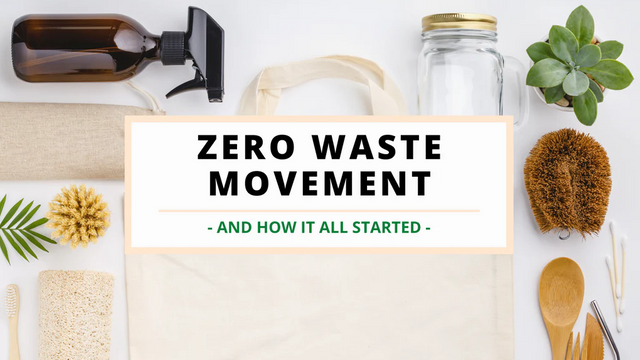
Get this:
It was during this time that Ralph Waldo Emerson and Henry Thoreau wrote their famous works that both romanticized nature while encouraging us to appreciate the natural world. Sierra Club was founded around the same time with the same sentiment.
There’s more:
Advances in science painted a clear picture of the devastation humans could possibly bring to this planet. Evidence emerged that human overpopulation could lead to ecological destruction. There also were some scientists discovering how Earth traps heat like a greenhouse.
It’s true:
Environmentalism has existed for a long time. Many of the things that happened in the 19th century set the groundwork for what was to come, including the zero waste movement.
60s-70s: Mobilizing the Movement
The 1960-70s were a time of great social change in America. From women’s rights to civil rights, many people were fed up with how things were and took action to build a brighter tomorrow. The environmental movement was no exception.
Get this:
Many books and media outlets of the time started to expose the harm of the industrial world around us. Rachel Carson’s 1962 book “Silent Spring,” alarmed citizens about how detrimental pesticides were to the health of humans, animals, and our environment. This raised intense public concern, eventually leading to the banning of DDT.
There’s more:
This was just the start. Many groups were formed to advocate for protecting our water and air from pollution. People organized and took action. They marched, wrote books, and influenced legislation.
In many ways, social movements were intertwined with environmental movements. The intersectionality of all of these causes is where real change occurred, and still does to this day. It boils down to this:
The second half of the 20th century led to an important shift in a new public perspective. Even if you were not a participating activist, environmentalism became common knowledge. No matter what your fight was, most people would agree that they hoped for a greener, more peaceful future. It was time:
The world was ready for the zero waste movement.
1980s: Urban Ore’s Mission to End the Age of Waste
With all of this new public scrutiny of the environmental impacts of our humanly habits, people started to question the concept of waste.
Think about it:
Since post-war America of the 1950s and perhaps even earlier, we have been spoon fed the concept of excessive consumption. More stuff means means a “better” economy, but also means more natural resources being decimated and more pollution created from manufacturing.
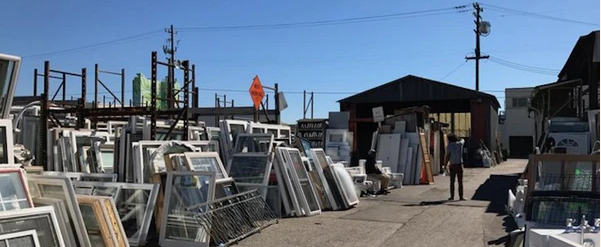
(Urban Ore’s Eternal Garage Sale)
There’s more:
More stuff also means more waste. Our stuff ends up in the landfill, creating methane, a gas that contributes to climate change or it finds it’s way to a trash incinerator which causes increased risks of asthma/cancer to surrounding communities.
This disastrous cycle became apparent to many people in the 1990s, and the term “zero waste” emerged as a concept for total recycling. This simply means zero landfilling, zero burning, and maximum materials recovery. Get this:
Not only is wasting things environmentally irresponsible, but it is costly as well! By reusing, recycling, and composting all materials, we could save a lot of money as a society. So…who created this concept?
Although it is hard to pinpoint the exact birth of “zero waste,” Daniel Knapp was a huge initial contributor to the movement. Knapp started the organization known as “Urban Ore” and his mission is pretty clear:
To end the age of waste.
So, how did Urban Ore work to achieve this?
In 1982, Urban Ore moved into a vacant building on Berkley, California’s solid waste transfer station. This building was originally supposed to be for a trash incinerator, but Urban Ore and the surrounding community opposed it, which led to the plan being canceled.
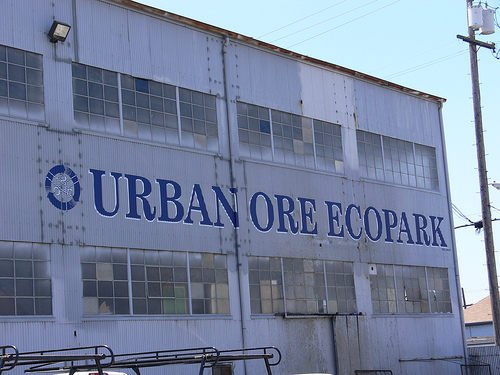
Urban Ore building
Urban Ore emerged as a scavenger organization, picking through trash and selling usable items to the public. The community becoming increasingly interested in this operation, so the city incubated the company by giving them access to resources and by giving them the space rent-free.
Urban Ore has been dubbed Berkley’s “eternal garage sale” because that is sort of what it feels like. When you arrive, you’ll find tons of perfectly fine discarded items. Holiday decorations, bathroom fixtures, furniture, and so much more.
An article on Berkley’s website describes it like this:
“For Cal students who eschew the particle board of Ikea, Urban Ore’s been a cheaper and more durable source of furniture for generations. For mechanics, plumbers, and construction workers, it’s an alternative to Home Depot. For the hip, alternative young, it’s a weekend haunt. For artists, a palette.”
It has been serving the community for years and has given life to many objects that otherwise would still be decaying in the landfill. Urban Ore has made so many amazing initial strides when it comes to the zero waste movement.
Throughout time, Urban Ore has worked on building up programs revolving around reuse and recycling. By being active in the politics of recycling and advocating for cleaner solutions, they have helped bringing countless positive changes into the world.
Urban Ore’s simple, creative vision of reuse really has set the foundation for the zero waste movement.
1990s: Knapp’s Travels Abroad
After working on Urban Ore and various other waste management programs in the United States, Dr. Knapp felt compelled to share some of his ideas with the rest of the world.
Get this:
Knapp traveled to Australia to talk to governments, businesses, and citizens about maximizing materials recovery and minimizing wasting by reusing, recycling, and composting. He was there to promote his “total recycling” idea.
The key point in this idea was to bring all resources back into commerce or transformed back into a raw material. Daniel’s twelve-step sorting approach is now the basis for zero waste planning in many US cities. Go Daniel!
Australia started to promote “No Waste by 2010” in response to a reuse/recovery women-owned business known as REVOLVE. Similar to Urban Ore, REVOLVE would pick items from going to the landfill and sell them to the public. Sound familiar?
REVOLVE wanted to become more efficient, so they made plans for a new no-waste transfer facility. The Australian government supported their plan and Knapp, who already had a ton of experience in this field, consulted them.
This concept spread to small towns in the area and eventually morphed into the term “zero waste.” In December of 2000, the first zero waste conference took place thanks to local organizers. Conference organizers then toured the United States to share and describe the new zero waste programs.
It gets better:
This tour was perfectly timed! There already was a lot of heightened public enthusiasm for increased grass roots recycling in the United States. No Waste and Zero Waste started to go viral on the internet. People wanted to see these changes happen!
2002: The Formation of Zero Waste International Alliance
At this time, a man known as Richard Anthony found himself reviewing papers for an upcoming resource conference. He noticed too many of the papers were focused on trash incineration, and not the frontline issue: waste as a societal problem.
This made him realize that he wanted to have a workshop devoted to zero waste at the conference. He put a team of experts together and sent them to the event. This dream team consisted of Dr. Daniel Knapp as well as other scientists, waste management professionals, and activists.

The team did well at the conference and then directly went to another one in the United Kingdom. This meeting attracted many activists who were fighting off incinerators and landfills. It gets better:
Once news spread about this, many decision makers all over the world became attracted to the concept of zero waste. There’s more:
More meetings kept being put into action and this new network of talented, enthusiastic international organizers came together to form the Zero Waste International Alliance (ZIWA).
ZIWA defines zero waste as: “The conservation of all resources by means of responsible production, consumption, reuse, and recovery of products, packaging, and materials without burning and with no discharges to land, water, or air that threaten the environment or human health.”
Their goal is simple. ZIWA sets guidelines and standards to help the development of zero waste in the world for governments, waste management teams, and businesses. The rest is history!
Social Media & The Modern Zero Waste Movement
The zero waste movement formed deeply rooted in policy change and large scale innovation. Although this has not changed, there seems to be another layer to the movement that has been added over the past decade: individual responsibility.
Bea Johnson was one of the first people to document her zero waste lifestyle on social media. In 2008, she adopted a zero waste as a lifestyle for her and her family, and her life has not been the same ever since.
By focusing less on “stuff,” she has been able to create more meaningful experiences in her life, which led her to reflect and share via a blog and write her top selling book, “Zero Waste Home.”
It’s crazy:
Her voice has led to an ever-growing global movement. It has inspired hundreds of thousands of people to implement waste-free living, shop at package-free shops, conceptualize new reusable products, and start their own organizations. It’s amazing!
Zero waste alternatives seem like commonplace in the world of the internet these days, but Bea was a pioneer along these fronts. She did not have a ton of resources to turn to. She had to find these alternatives on her own! This required a lot of trial and error.
Her mantra is simple: Refuse, Reduce, Reuse, Recycle, and Rot (and only in that order). That means refuse single-use that is presented to you, reduce your consumption, reuse as much as possible, recycle what you have to, and let whatever else rot.
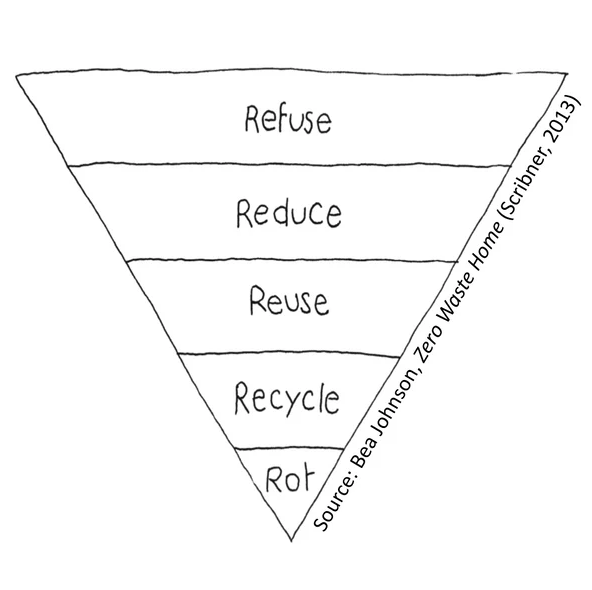
By implementing these rules into her life, she eventually cut down her entire family’s annual trash footprint into the contents of a jar. Isn’t that amazing?
Bea could not have done it without one specific tool: social media.
Social media allowed her really to get the word out and spread information fast. She inspired a whole new group of people to take on this lifestyle and share their experiences via blogs, vlogs, podcasts, twitter, Instagram, Facebook, etc.
Nowadays, it is quite easy to find zero waste resources online. People explain their product swaps on YouTube and everyday people share their tricks with each other on zero waste Facebook groups.
Be thankful:
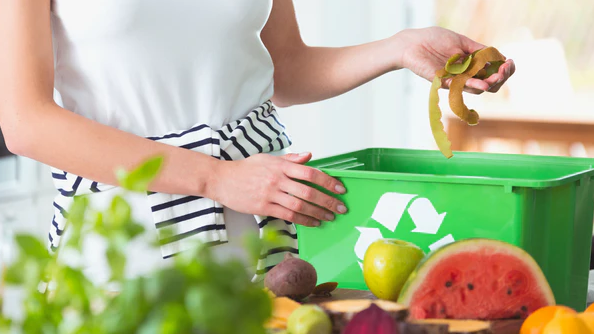
The internet has been a great tool in moving this movement forward and spreading the word. In fact, it has given leverage to a whole new generation of the zero waste movement. Check it out:
Current Faces of the Zero Waste Movement
One of the most recognized current faces of the zero waste movement is Lauren Singer, creator of the blog “trashisfortossers”.
Get this:
Lauren decided to become zero waste while she was in college studying environmental science. She noticed that a classmate would bring lunch that was all single-use to class every day and this silently infuriated her. Think about it:
How could you feel like you are making a difference when you are learning about the environment yet still taking the actions to create waste and hurt it?
She soon learned about Bea Johnson and was instantly inspired. This forced her to make radical changes in her life as she chose to stop perpetuating the habits of waste making.
Lauren decided to start her blog to document her journey transitioning to zero waste and to help others learn how to make their own swaps. Lauren shares recipes for making her own beauty products explains how to grocery shop zero waste, and so much more!

Now that zero waste has found it’s place in mainstream media, more advocates are jumping on board and using social media to leverage their message to the world. More and more people are also finding their own niche within the movement and finding their unique voice.
For instance, look at zero waste daniel, a New York-based clothing designer that is focused on reducing waste. Daniel has many of the same viewpoints as Lauren and Bea, but he has found his own unique voice by focusing on clothing waste.
He was alarmed when he learned that 21 billion pounds of textile waste go to the landfill each year. Being a designer himself, he decided that he was going to make clothing without creating any fabric waste. Get this:
By utilizing pattern techniques and creating embellishments with small scraps, Daniel creates no waste with his garments and they are beautiful!
Not only is he focused on clothing, but daniel also pursues an entire zero waste lifestyle and no waste mindset. He uses recycled materials to ship things out and tries to reuse whenever possible.
He has had celebrities wear his clothes, has been featured on various media outlets, and now has his own shop/studio in Brooklyn. Zero waste Daniel has found his own voice in the zero waste movement and is successfully running his fashion business waste-free.
When it comes to having a unique voice in the movement, another brand comes to mind: Woke and Wasteless. Elena and Layel are a couple that are both focused on improving the human experience.
By having a people-focused view on the waste problem, they consider relationships and how that affects our connections to others as well as the planet. By highlighting ancestral knowledge and positioning people of color as solution holders, they are bringing people together to unify against waste.
They also focus less on individual impact and more on collectivizing power. How can we come together to fight the waste crisis?
To be resilient, they say that we must adapt to climate change while accepting and celebrating our individual and collective creativity. There’s more
They also are critical of the zero waste movement in a positive way, saying that you do not have to be white, trendy, or minimalist to transition to a zero waste lifestyle. Everyone is different and they need to find the things that work the best for them.
By highlighting POC and queer perspectives, Woke and Wasteless is advocating more an unique and important lens of zero waste.
Although Bea, Lauren, Daniel, Elena and Layel are all different individuals, they all share a similar vision of a cleaner, safer, and healthier planet. Social media has allowed them to share their own perspective on the waste epidemic.
The Future of Zero Waste
In many ways, we are still at the beginning of the zero waste movement. It really has only been around for 25 years and has evolved a lot over that time. So, where do we go from here?
It’s really up to us! I think the movement will spread as more and more people share their stories and educate others. Hopefully, governments and businesses will be listening and start to implement zero waste policies.
If bigger entities pursue zero waste movement, it will be easier for people to transition to a new lifestyle. This will allow monumental change to happen.

In the past, zero waste was sometimes deemed as being too utopian or idealistic, but here we are. The movement is making strides and we are on our way towards a zero waste society.
Let’s do it!